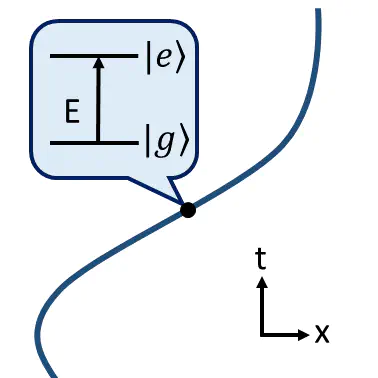Quantised mass-energy effects in a particle detector - AIP2022

Abstract
A simple but powerful model of a quantum particle interacting with an external environment consists of a two-level system coupled to a field. The internal state of the particle can change in response to the field. For example, the particle’s internal energy can increase at the expense of decreasing the energy of the field. As the latter means decreasing the number of field excitations (field-particles), such a model is also referred to as a particle detector, specifically, an Unruh-DeWitt detector. Research using this model has mostly focused on a completely classical description of the external degrees of freedom (DOFs) of the detector, i.e., assigning it a classical trajectory, and treating only the internal state as a quantum DOF. On the other hand there is also a formal field-theoretic version of this model, where the detector itself is described as a quantum field. Yet, neither of these models captures the most natural application of such a system: a low-energy quantum particle, such as an atom, interacting with a quantum field, e.g. with light. The atom’s position needs a quantum description, but it is not directly described in terms of a single relativistic quantum field. For these reasons, there has been much interest in a more realistic quantum description of the detector’s centre of mass. So far it has either been described as moving in superposition along classical trajectories, or dynamically evolving under a non-relativistic Hamiltonian. However, the processes of interest—the absorption or emission of field particles—necessarily change the detector’s rest mass by the amount of energy of the absorbed or emitted field quanta, and neither of the above models can capture such effects. Yet the importance of including mass-energy equivalence in atom-light interactions has been noted before, in atomic physics, where it has been identified with the Röntgen term or mass-defect, and its omission leads to non-physical effects.
Here we address this problem and incorporate the quantisation of the detector’s mass-energy into the Unruh-DeWitt model. We show that internal energy changes due to emission or absorption are relevant even in the lowest energy limit [1]. Specifically, corrections to transition rates due to the detector’s mass changing cannot be ignored unless the entirety of the center of mass dynamics is also ignored. Our results imply that one cannot have a consistent model of a massive particle interacting with a relativistic quantum field without including the relativistic mass-energy equivalence, at the least, in the particle’s dynamics.